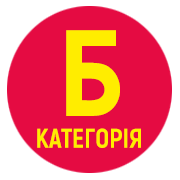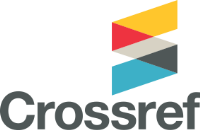ANALYSIS OF ENERGY MECHANISMS AND OPTIMIZATION OF TRAINING LOADS IN YOUNG FEMALE SWIMMERS
DOI:
https://doi.org/10.32782/olimpspu/2024.2.1Keywords:
swimming, girls aged 10-11, stage of preliminary basic preparation, adaptation, anaerobic alactate mechanism, aerobic energy supply, special physical preparednessAbstract
A comprehensive analysis and optimization of training loads for young swimmers during the critical period of physiological development at the ages of 10-11 years are crucial for understanding the specifics of sports training. Given the intensive changes occurring in the body at this stage of life, meticulous research into energy systems and the adaptation of training methodologies significantly enhance the efficiency of preparation and contribute to the healthy development of young athletes. The study plays a key role in determining the most effective approaches to training, aimed at maximizing the potential of young athletes while minimizing the risk of injuries and overtraining. The aim of the study is to analyze the indicators of special physical preparedness of young swimmers. The object of the study is the training process at the stage of preliminary basic preparation. The subject of the study is the indicators of special physical preparedness of swimmers aged 10-11 years. Research methods include analysis and generalization of specialized literature and Internet materials; pedagogical research; pedagogical testing; methods of mathematical statistics. The results of the study revealed a number of key findings of significant theoretical and practical interest through an in-depth analysis of the indicators of special physical preparedness of young swimmers aged 10-11 years. The swimming results for the 25 m freestyle distance (16.87±0.17 s) demonstrated high activity of the anaerobic alactate mechanism, underscoring the importance of developing training exercises aimed at increasing speed and explosive power, which are critical for short distances. The average time for the 800 m freestyle distance (799.42±7.33 s) indicated the dominant role of aerobic energy supply in prolonged efforts. Highlighting this aspect is directly related to planning training sessions to increase overall endurance and the ability to withstand long-term physical exertions. The progressive increase in swimming time in each subsequent segment with a 15 s rest interval indicated a gradual loss of work capacity due to the accumulation of fatigue, requiring special attention to recovery strategies and rational distribution of loads in the training process. Conclusions. The study emphasizes the critical role of adequate recovery and strategic management of energy resources to maintain high work capacity in competition conditions, indicating the need to develop training programs aimed at increasing lactate tolerance and optimizing recovery processes to maximize the athletic potential of swimmers.
References
Адамович І. С. Методика вдосконалення техніки плавання кролем плавців 10-11 років : кваліфікаційна робота магістра спеціальності 017 "Фізична культура і спорт" / наук. керівник О. І. Верітов. Запоріжжя : ЗНУ, 2020. 53 с.
Білов С. О., Тищенко В. О. Соколова О. В. Засоби і методи розвитку швидкісних здібностей плавців. Фізичне виховання та спорт. № 2. 2022. C. 67–74.
Політько, О. В. (). Особливості морфо-функціональних характеристик і рівня фізичної підготовленості юних плавців 10–11 років. Основи побудови тренувального процесу в циклічних видах спорту. 2020. С. 66–73.
Tищенко В., Лисенчук Г., Коваленко Ю. Дослідження теоретичної підготовки в циклічних видах спорту (на прикладі плавання). Теорія і методика фізичного виховання і спорту. 2019. № 2. С. 25–30.
Ivanenko S., Tyshchenko V., Pityn M., Hlukhov I., Drobot K., Dyadechko I., Zhuravlоv I., Omelianenko H., Sokolova O. Analysis of the Indicators of Athletes of Leading Sports Schools in Swimming. Journal of Physical Education and Sport, (JPES). 2020. Vol. 20 (4). Art 233. P. 1721–1726.
Lorenzo-Calvo, J., de la Rubia, A., Mon-López, D., Hontoria-Galán, M., Marquina, M., & Veiga, S. Prevalence and impact of the relative age effect on competition performance in swimming: a systematic review. International Journal of Environmental Research and Public Health. 2021. Vol.18(20). P. 10561.
Malina, R. M. Physical growth and biological maturation of young athletes. Exercise and sport sciences reviews. 1994. Vol. 22(1). P. 280–284.
Van Praagh, E. (2000). Development of anaerobic function during childhood and adolescence. Pediatric Exercise Science. Vol. 12(2). P. 150–173.







